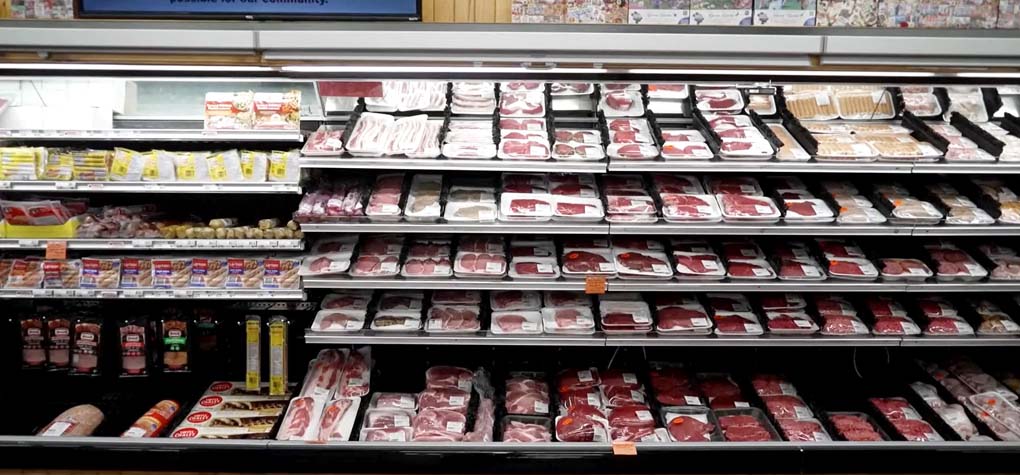Introduction
A wave of anti-American sentiment is sweeping global markets as President Donald Trump’s proposed tariffs on foreign goods trigger retaliatory boycotts of U.S. products. From soybeans to smartphones, consumers and governments worldwide are shunning American-made goods in protest, reshaping trade dynamics and deepening fractures in international relations.
With Trump vowing to escalate tariffs to “60% or higher” on Chinese imports if re-elected—a policy echoed by his allies—Bloomberg reports that nations like China, the European Union, and India are doubling down on campaigns to reduce reliance on U.S. exports. This article delves into the economic casualties, political brinkmanship, and grassroots anger fueling the “Boycott USA” movement.
The Tariff Domino Effect: How Trump’s Policies Lit the Fuse
Trump’s tariff strategy, first rolled out during his 2016–2020 presidency, aimed to revive U.S. manufacturing by penalizing foreign competitors. But according to Reuters, the approach backfired: China retaliated with its own levies on U.S. agriculture, the EU targeted bourbon and motorcycles, and Mexico taxed pork. Now, with Trump signaling even steeper tariffs, the global response has intensified.
“This isn’t just about economics—it’s about sending a message,” said Beijing-based trade analyst Li Wei in an interview with The Financial Times. “Countries are tired of being strong-armed.”
China’s Counterpunch: From iPhones to Iowa Soybeans
China, the primary target of Trump’s tariffs, has weaponized consumer nationalism. State media urges citizens to ditch iPhones for Huawei and avoid U.S.-grown soybeans—a direct hit to heartland farmers already reeling from years of trade war whiplash.
“I used to buy American soybeans because they were cheaper,” said Zhang Ming, a feed supplier in Shandong province. “Now, purchasing them feels unpatriotic.” The South China Morning Post notes that U.S. soybean exports to China plummeted 40% in Q1 2024 compared to 2023.
Meanwhile, Apple’s sales in China dropped 12% year-over-year, per CNBC, as Huawei’s nationalist appeal surges.

Europe’s Quiet Revolt: Whiskey, Jeans, and Cultural Pushback
In Europe, the backlash blends economics with cultural resistance. France’s “No to American Coca-Colonization” campaign promotes local wines over California brands, while Germany’s small businesses boycott Levi’s jeans.
“Why wear Levi’s when we have centuries of tailoring tradition?” argued Berlin boutique owner Klaus Fischer, whose store now stocks only European denim. Politico EU reports that U.S. apparel exports to the EU fell 18% in early 2024.
Even Scotland’s whisky industry, which Trump once vowed to protect, faces headwinds. Distilleries like Glenfiddich report canceled U.S. orders amid retaliatory EU tariffs. “It’s a lose-lose game,” said CEO Brian Kinsman in BBC News.
India’s Grassroots Boycott: “Make in India” Gains Steam
In India, Prime Minister Narendra Modi’s “Make in India” initiative aligns with anti-U.S. tariff sentiment. Social media trends like #BoycottAmericanGoods urge consumers to swap Coca-Cola for Thums Up and avoid Ford cars.
For Mumbai street vendor Ramesh Patel, the movement hits close to home. “I stopped selling Pepsi. Young people want local brands now,” he told Al Jazeera. Auto giants like Ford, which once bet big on India, are scaling back operations as sales stall.
The Human Cost: Farmers, Families, and Fractured Dreams
Behind the trade stats are stories of livelihoods upended. In Iowa, soybean farmer Jim Thompson stares at unsold harvests. “China was my biggest buyer. Now, I’m stuck with silos full of beans,” he said, his voice cracking. The Guardian estimates that U.S. farm bankruptcies have risen 22% in tariff-affected states since 2023.
In Shanghai, single mother Liu Yan juggles two jobs after losing her position at a U.S.-owned factory that downsized due to slumping orders. “I don’t blame China or America—I blame the politicians,” she said.

Political Fallout: Global Alliances Tested
The boycotts are straining diplomatic ties. At April’s G7 summit, EU leaders warned U.S. officials of a “trade cold war” if tariffs escalate. Meanwhile, China and Russia are capitalizing on the rift, offering tariff-free deals to nations alienated by U.S. policies.
“Trump’s approach is pushing countries into Beijing’s arms,” said former U.S. Trade Representative Susan Schwab in The Washington Post.
What’s Next? A World Less Willing to Buy American
Economists warn the “Boycott USA” trend could outlast Trump. The Economist highlights that even if tariffs ease, consumer habits forged during this period may endure. “Why would China rebuild reliance on U.S. soybeans after investing in Brazilian suppliers?” asked analyst Maria Lopez.
For U.S. exporters, diversification is critical. California winemaker Emma Carter now markets to Southeast Asia. “We can’t count on Europe anymore,” she told Forbes.
Conclusion: A Trade War With No Winners
The “Boycott USA” movement underscores a harsh reality: tariffs designed to protect often end up isolating. As global supply chains pivot away from American goods, the U.S. risks losing long-term market share—and credibility.
“Trade wars aren’t ‘easy to win,’” said Li Wei, referencing Trump’s 2018 claim. “They’re easy to start and impossible to fully stop.” For farmers like Jim and workers like Liu, that lesson has come too late.
Related Video:
Sources:
- Bloomberg: Trump’s tariff proposals and global market reactions.
- Reuters: Historical context on U.S.-China trade war impacts.
- The Financial Times: Analyst insights on political messaging.
- CNBC: Apple sales data in China.
- Politico EU: European boycott trends and apparel export stats.
- BBC News: Scottish whisky industry challenges.
- Al Jazeera: India’s grassroots campaigns and vendor interviews.
- The Guardian: U.S. farm bankruptcy figures.
- The Washington Post: Diplomatic tensions and G7 summit details.
- The Economist: Long-term economic forecasts.
Explore More:
- BRICS Strike Back: Trump’s 150% Tariffs Ignite Dollar Nightmare
- Trump’s Tariffs Hit China, Mexico, Canada Saturday: Key Impacts
- Trump & Macron Meet as Europe Seeks Stronger Ties & Stability
- President Donald Trump’s Latest Executive Orders: Key Highlights and Implications
- President Trump Inauguration Day: Key Highlights and Historic Moments

